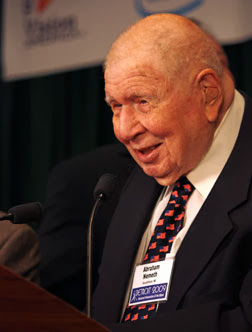Dr. Nemeth was blind since birth, but he invented many technological devices to make his life easier. I recall a Friday night get together at Rabbi Efry Spectre’s home during high school when Dr. Nemeth was the guest speaker. He showed the 20 or so teens in the room how he developed a wrist watch that would tell him the time just by touching it. He also showed us the Braille siddur (prayerbook) that he uses.
Dr. Nemeth taught math for 3 decades at the University of Detroit and then started their Computer Science department. In terms of his lasting legacy, his entry in Wikipedia explains that Dr. Nemeth developed “the Braille code that would more effectively handle the kinds of math and science material he was tackling. Ultimately, he developed the Nemeth Braille Code for Mathematics and Science Notation in 1952. The Nemeth Code has gone through 4 revisions since its initial development, and continues to be widely used today. Nemeth is also responsible for the rules of MathSpeak, a system for orally communicating mathematical text. In the course of his studies, Nemeth found that he needed to make use of sighted readers to read otherwise inaccessible math texts and other materials. Likewise, he needed a method for dictating his math work and other materials for transcription into print. The conventions Nemeth developed for efficiently reading mathematical text out loud have evolved into MathSpeak.
